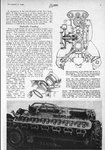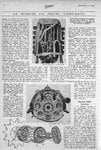tail end charlie
Senior Airman
- 615
- Aug 24, 2010
Colin is right.
Trying to "flip" an engine to suit different airframes would require modification and testing of both the oil system and cooling systems if nothing else. And by testing you are probably looking at hundreds of test stand hours in addition to flight testing hours.
Since "flipping" the engine is going to bring no benefits in either power or longevity (if the engine was designed/developed properly to begin with) that is a lot of trouble and expense for no gain.
According to wiki there were a few pre war engines with inverted V design but all seem to be air cooled, maybe they decided to water cool it and went down that path. I suppose all engines must work "upside down" when in negative G or when flying upside down anyway.



